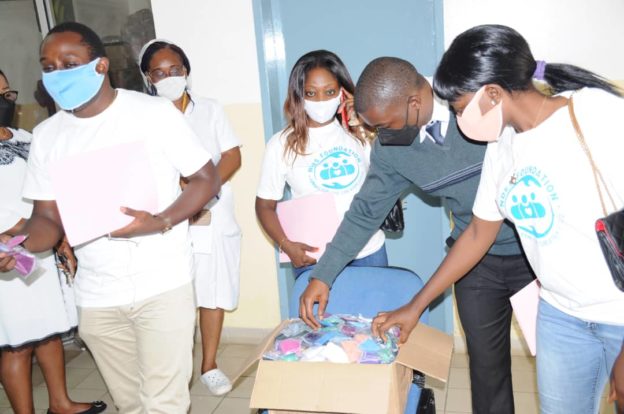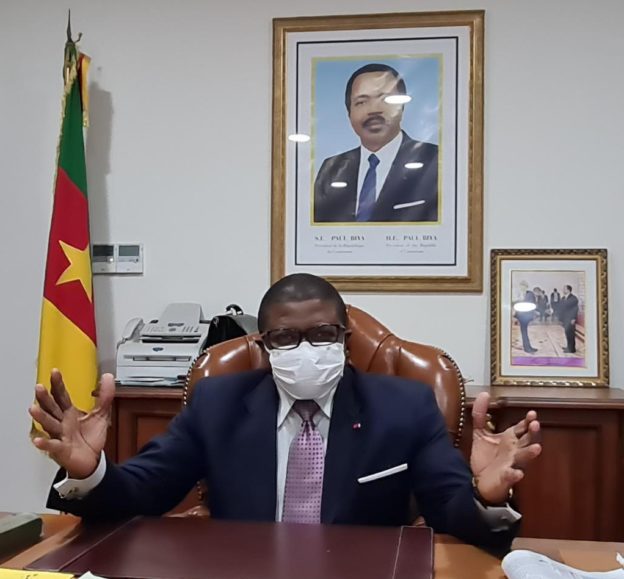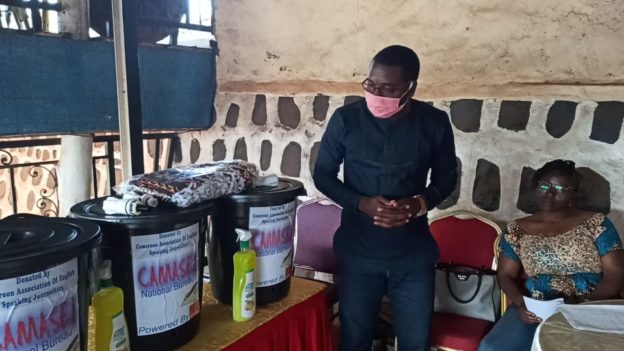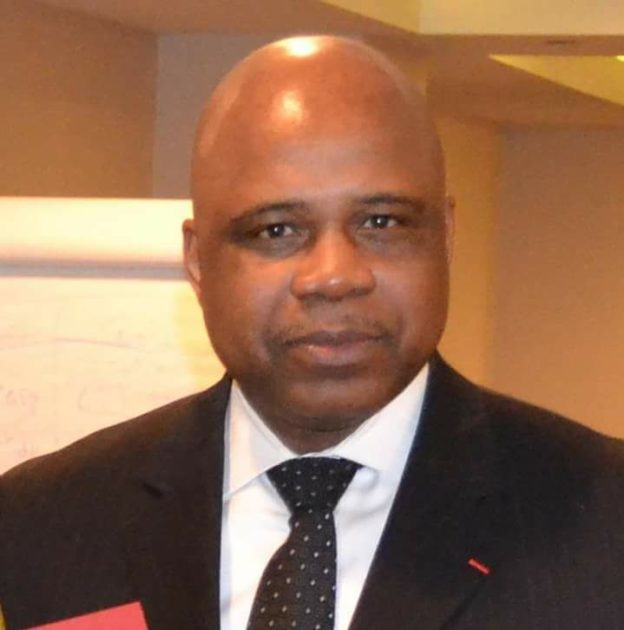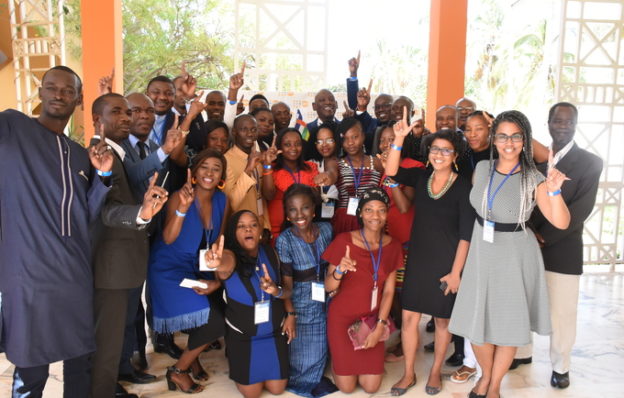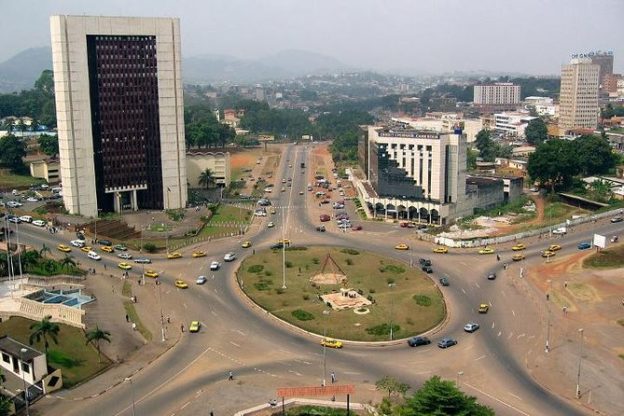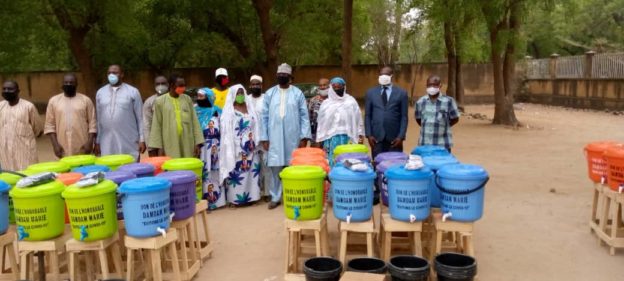Depuis l’annonce le 18 mars 2020 par le gouvernement camerounais, des 13 mesures barrières pour lutter contre le Coronavirus, l’activité des travailleuses de sexe tourne au ralenti. Yaoundé, capitale camerounaise, quartier Melen, lieu-dit mini-ferme, les couloirs sont presque déserts en soirée et dans la nuit c’est le calme plat. Les travailleuses de sexe plus connues comme des filles de joie sont en vacances forcés. Conséquences, mesures barrières et distanciation sociale afin de combattre le coronavirus (covid-19), qui a fait son nid à travers le monde. Plusieurs d’entre elles ont opté pour de nouvelles stratégies de survie dans leur activité quotidienne, d’autres sont à la maison en attendant la fin de cette pandémie. Dans un couloir entre deux habitations de mini-ferme, alors que nous effectuons notre enquête, certaines travailleuses de sexe(TS) se sont confiées à nous. C’est le cas de Marie-Jeanne, qui se fait généralement appelée « la maitresse ». Cette TS la trentaine révolue, a trois enfants et une grande famille à sa charge, connait en ce moment une période sombre dans son activité. Habituée à percevoir des bonnes sommes d’argent par jour, « la maitresse » se contente de 2000francs CFA de bénéfice depuis la crise sanitaire. Marie-Jeanne dit que la majorité des clients du couloir se font rares. Le plus difficile pour elle à cette période, est d’avoir au moins l’argent de taxi et de nutrition pour sa famille. « Les cotisations sont arrêtées. C’est dur ! Les clients fidèles viennent me demander des services gratuits. Certains me disent que le dehors est dure et me disent qu’on les a chassé du travail et me supplient de ne pas les laisser comme ça. Je refuse des services gratuits parce que je vis aussi de ça. Mon bailleur m’attend avec l’argent du loyer, les enfants m’attendent avec leur petit-déjeuner. » Danielle, mère d’un enfant, travailleuse de sexe qui habite le quartier Mimboman et officie à mini-ferme dit que leur auberge a été fermée mais ses collègues et elles fonctionnent dans une maison de passe. « Nous avons une maison de passe où nous payons par fille 1500francs CFA. Certaines d’entre nous, les anciennes dorment là-bas car nous avons des heures de travail différentes. Je débute parfois entre 5heures et 6 heures. Et comme c’est une période morte, nous avons des registres où nous avons noté des numéros des clients fidèles. On appelle tout simplement. Tu appelles même tes dix clients fidèles et tu as un bon retour parfois. J’appelle… Bonjour, c’est comment ? Tu m’as oublié ? Et certains me répondent ; Non, je suis là, juste le foirage et le coronavirus. Je les incite à venir et on négocie le prix. A travers les appels, tu peux avoir trois clients qui viendront. L’avantage est qu’en journée je fais parfois dans l’hôtellerie et la restauration sinon ce n’est pas facile.» Ayant aussi officié dans des villes comme Kye-ossi dans la région du Sud, Danielle trouve la situation actuelle très difficile au vu des entrées financières qu’elle a pour habitude de faire par jour. « Il y’a des jours qui te sourient. Avant la maladie, tu pouvais avoir 10.000 à 15.000 Francs CFA. Actuellement c’est très difficile pour nous.» dit-elle. Gestes barrières Avec cette crise sanitaire, plusieurs travailleuses de sexe qui exercent en ce moment à l’instar de « la maitresse » disent avoir mis en place des mesures barrières pour éviter d’être contaminée par un client. « Je quitte désormais de chez moi à 16heures pour venir travailler mais quand on nous chasse en bordure de route, je retourne dans mon couloir. Chaque client vient avec son masque et son désinfectant. Et, à l’entrée de mon auberge il y’a un seau d’eau avec du savon. Chaque client est obligé de laver ses mains avant qu’on entre dans la chambre.» explique « la maitresse ». Pour Danielle, qui a une expérience dans ce domaine depuis 2015, le coronavirus est juste venu renforcer les méthodes de prévention de lutte contre les maladies. Danielle nous confie : « Avant le coronavirus, j’employais déjà des méthodes d’hygiène. Je mets de l’eau de javel dans un grand seau d’eau et j’utilise un autre petit seau pour que mes clients se désinfectent les mains. Moi, également puisque je fume je me désinfecte dans mes toilettes où les clients n’ont pas accès. Pendant l’acte sexuel, on évite de se toucher les corps et ils portent leurs masques. Ceux qui les enlèvent durant l’acte doivent me payer un montant de plus. Et après passage d’un client, il faut nettoyer la chambre.» Contribution des OBC Certaines organisations à base communautaires, ayant pour cibles consacrées les travailleuses de sexe (TS) et leurs clients ont mis sur pied une batterie de mesures afin de combattre la propagation de cette épidémie au Cameroun. C’est le cas de l’ONG Horizons Femmes, qui malgré la Covid-19, à travers le projet CHAMP (Continuum of Prevention, Care and Treatment for Most at Risk Population in Cameroon), poursuit depuis 2014, la réduction des infections à VIH/IST, la morbidité et mortalité entre autres. Selon Rosalie Pasma Ngoumjouen, Drop-in-center Manager à l’ONG Horizons Femmes, les activités de masse en communauté ont été suspendues pour faire place à plus de counseling à l’endroit des bénéficiaires par petits groupes ou par appels téléphoniques. « Nous avons orienté les activités de counseling des personnes vivant avec le VIH (PVVIH) en direction du Covid-19. Il y’a eu récemment des groupes d’echanges avec pour thématique : COVID-19 : AIDER LES PVVVIH A NE PAS SE VERSER DANS LA PANIQUE PENDANT CE MOMENT DE CRISE SANITAIRE. Les participants ont marqué un intérêt particulier sur les questions autour de cette maladie durant la rencontre. La responsable du Drop-in-Center souligne le fait que tous les acteurs impliqués dans la chaine du projet contactent les bénéficiaires par appel. Il y’a plus un travail virtuel qui est fait au sein de leur organisation. « Nous suivons par téléphone nos bénéficiaires en ce qui concerne le suivi communautaire. On se rassure que les (PVVIH) font leurs charges virales. Nous motivons certains bénéficiaires à venir faire leur dépistage et suivi dans nos laboratoires en les offrant gratuitement des masques. »
Read More



